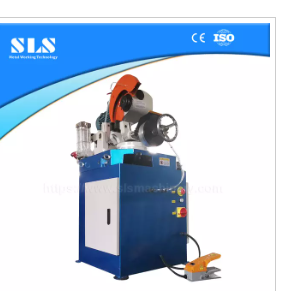Understanding How a Profile Pipe Bending Machine Operates
Profile pipe bending machines are essential tools in the metal fabrication industry, used for creating precise bends in various types of metal pipes. This article will delve into the mechanics and components of these machines, illustrating how they enhance productivity and precision in metalworking.
Key Components and Their Functions
Drive System
The drive system of a profile pipe bending machine consists of an electric motor that provides the necessary power to perform bends. This motor typically operates at a power rating of 5-15 kW, depending on the machine model, which directly influences the bending capacity and speed.
Bending Dies
Bending dies are critical for shaping the pipe according to precise specifications. These dies come in various sizes and radii, tailored to the diameter of the pipe and the angle of the bend required. High-quality dies are essential for achieving smooth bends without damaging the metal.
Hydraulic System
Hydraulic systems in bending machines apply consistent pressure to the pipe, ensuring uniform bends. The system's efficiency is paramount, as it affects the speed and precision of the bending process. Hydraulic pumps in these machines often have a capacity of 3000 psi to 6000 psi, which determines the thickness and types of metal they can bend effectively.
Control Panel
The control panel allows operators to set the parameters for each bending operation, including bend angles, rotations, and bending speed. Modern machines feature programmable logic controllers (PLC) with touch-screen interfaces, enabling high precision and ease of use.
Performance Metrics
Efficiency and Speed
A typical profile pipe bending machine can process pipes at a speed of 1 to 2 meters per minute, with efficiency depending on the complexity of the bend and the type of metal. The efficiency of these machines significantly reduces labor costs and increases production rates.
Cost and Budget
The initial cost of a profile pipe bending machine ranges from $20,000 to $100,000. Operational costs include power consumption and maintenance, which vary based on usage but generally remain low compared to the productivity gains.
Quality and Durability
Manufacturers design these machines to operate for approximately 30,000 hours before major repairs are necessary. The lifespan can extend further with proper maintenance, ensuring that the machine remains a valuable asset in metal fabrication for many years.
Specifications and Size
The dimensions of a typical machine are around 3.5 meters by 1.5 meters, with a weight of approximately 2000 kilograms. These specifications are crucial for planning the layout of a fabrication workshop.
Advantages and Material Handling
Profile pipe bending machines handle a wide range of materials, including aluminum, stainless steel, and carbon steel. The primary advantage of using these machines is their ability to produce consistent, high-quality bends that meet precise specifications without the need for extensive manual labor.
In conclusion, profile pipe bending machines represent a blend of advanced technology, efficiency, and reliability, making them indispensable in the field of metal fabrication. By understanding the components and capabilities of these machines, manufacturers can optimize their operations to achieve higher productivity and superior product quality.
